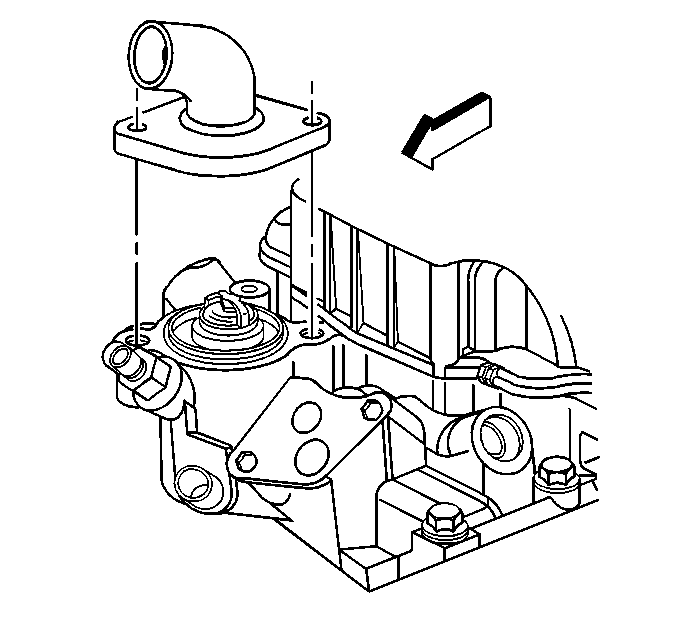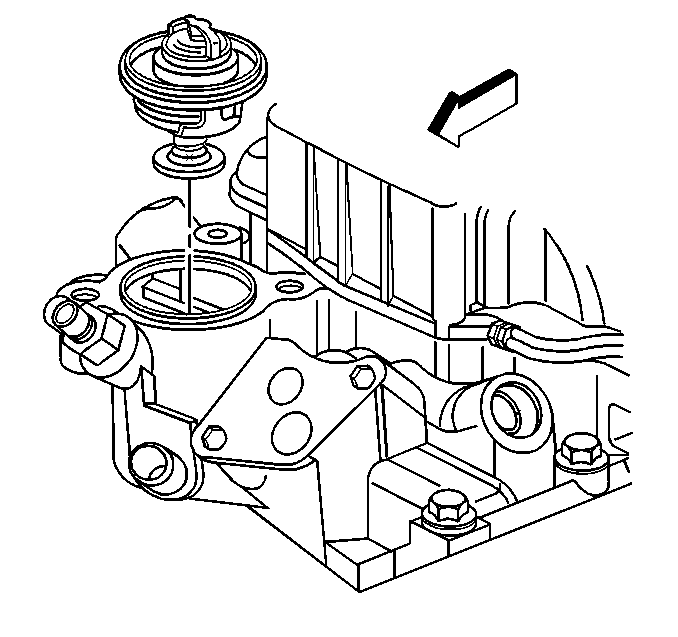Removal Procedure
- Remove the necessary coolant from the radiator. Refer to Cooling System Draining and Filling .
- Remove the radiator inlet hose. Refer to Radiator Hose Replacement .
- Remove the coolant outlet bolts.
- Remove the coolant outlet from the lower intake manifold.
- Remove the thermostat gasket.
- Remove the coolant thermostat.
- Clean all the sealing surfaces of the coolant outlet.
- Clean the sealing surface on the lower intake manifold.


Installation Procedure
- Install the coolant thermostat in the lower intake manifold.
- Install a new gasket (if used). Otherwise, place a 3 mm (1/8 in) bead of RTV sealer (GM P/N 1052289, or equivalent) at the groove on the coolant outlet sealing surface.
- Install the coolant outlet on the lower intake manifold.
- Install the attaching bolts.
- Install the radiator inlet hose. Refer to Radiator Hose Replacement .
- Fill the cooling system with specified coolant and concentration. Refer to Radiator Replacement .
- Inspect all sealing surfaces for leaks after starting the engine. Refer to Cooling System Leak Testing .

Important: In order to prevent leakage, thoroughly clean all parts and sealing surfaces.

Notice: Use the correct fastener in the correct location. Replacement fasteners must be the correct part number for that application. Fasteners requiring replacement or fasteners requiring the use of thread locking compound or sealant are identified in the service procedure. Do not use paints, lubricants, or corrosion inhibitors on fasteners or fastener joint surfaces unless specified. These coatings affect fastener torque and joint clamping force and may damage the fastener. Use the correct tightening sequence and specifications when installing fasteners in order to avoid damage to parts and systems.
Tighten
Tighten coolant outlet bolts to 19 N·m (14 lb ft).
